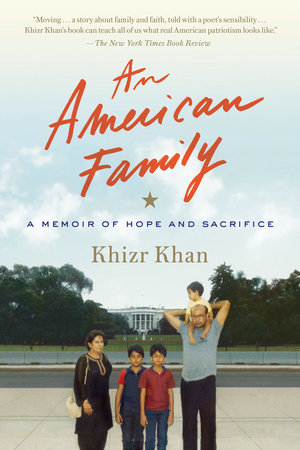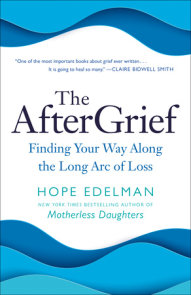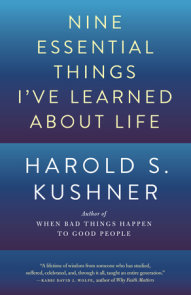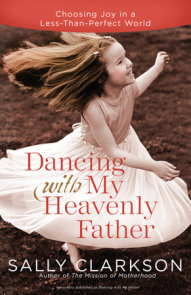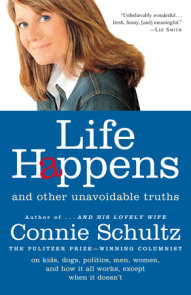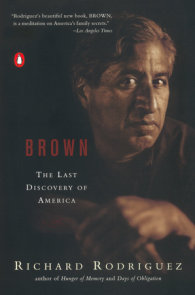TEACHING GUIDE
NOTE TO TEACHERS
Please click on the PDF link at the bottom of this page to download the Teacher’s Guide.
NOTE TO THE TEACHER
In a personal reflection on his life, Khzir Khan describes the path that led him to the center of a national conversation regarding immigration within the context of his discovery of the Declaration of Independence amidst the fraught political climate in Pakistan. This juxtaposition invites the reader not only to observe the shaping of his values and admiration of American ideals, but also to comprehend more deeply how people across the world are not afforded the rights and responsibilities that Americans have as a birthright. In telling his story, he weaves the familial values instilled in him through his grandfather’s lessons with his evolving admiration for America, his journey to citizenship, and the subsequent loss of his son. His reflections allow the reader to view the challenges and sacrifices that immigrants may face in their pursuit of the American Dream through a firsthand perspective. In doing so, Khan provides reasoning for, and an understanding of, his fervent patriotism.
Supporting the national Common Core State Standards (CCSS) in Reading Informational Texts for high school curricula, An American Family is an appropriate selection for grades 9–12 in Language Arts, US History, and Government and Civics classes, and as a supplemental text or close read at the 8th grade level. At the college level, the book is appropriate for courses exploring Geopolitics, Race Studies, or Cultural Studies and is also ideal for first-year/common reading programs.
In the following “Examining Content using Common Core State Standards” section of this guide, prompts provide for a critical analysis of An American Family using the CCSS for Reading Informational Text for grades 8–12 and are organized according to the standards they primarily support. In addition, following each standard and its corresponding prompts, a classroom activity is provided that will further enhance analysis of the text.
For a complete listing of the Standards, go to: tiny.cc/Standards.
PRE-READING ACTIVITIES
When readers make connections to their life experiences, or connect prior knowledge to a text, their engagement with the text becomes more nuanced and meaningful (information regarding making reading connections can be found here: tiny.cc/makingconnections). Providing students with background knowledge regarding ideas and topics discussed in An American Family, such as the founding documents of the United States of America, will facilitate connections and enhance the reading experience for readers of all ability levels. Additionally, touching on Pakistani culture, the religion of Islam, and the poetry of Rumi will enrich their reading and deepen their understanding of the text.
Additionally, exploring contemporary conversations regarding immigration will situate the memoir within a real-world context and provide background regarding Khzir Khan’s speech at the 2016 Democratic National Convention. The contemporary conversation surrounding immigration is ever-evolving and is crucial to consider when exploring a text centered on the life and experiences of an immigrant.
Because immigration can be a sensitive and polarizing topic on which students may hold a variety of opinions, it is important to establish guidelines regarding classroom conversations. One way to introduce the topic is by addressing common myths surrounding immigration (“Ten Myths About Immigration,” a list provided by Teaching Tolerance: tiny.cc/immigrationmyths) and prompting students to question their own stereotypes and misconceptions. Further, encouraging students to explore and reflect on their own immigrant roots will help establish a sense of community within the classroom (a sample interview for students to conduct with their families can be found in this Columbia University Teachers College lesson on page 39: tiny.cc/immigrationinterview).
Finally, listening to Khzir Khan personally discuss dignity and patriotism will introduce readers to his views before reading the book: tiny.cc/khizrkhan.
EXAMINING CONTENT USING COMMON CORE STATE STANDARDS
ELA STANDARDS: READING INFORMATIONAL TEXT: GARDES 10, 11 & 12
KEY IDEAS AND DETAILS
CCSS.ELA-LITERACY.RI.8.1
Cite the textual evidence that most strongly supports an analysis of what the text says explicitly as well as inferences drawn from the text.
CCSS.ELA-LITERACY.RI.9-10.1
Cite strong and thorough textual evidence to support analysis of what the text says explicitly as well as inferences drawn from the text.
CCSS.ELA-LITERACY.RI.11-12.1
Cite strong and thorough textual evidence to support analysis of what the text says explicitly as well as inferences drawn from the text, including determining where the text leaves matters uncertain.
Despite the difficulties inherent in immigrating to a foreign land, Khan casts his hardships in a positive light: “Assimilating was not difficult for us. . . . I never felt that we were giving anything up, that we were being forced to subsume our culture, our identities, into something new and foreign. Instead, I focused on what we were gaining” (134). Later, as he considers the fact that he and his family will all be American citizens, he writes, “So sleeping in the park wasn’t so bad, really, not when I put it into context” (164). What role does Khan’s own personality and outlook play in shaping his immigration experience? Why was Khan willing to sacrifice so much in order for himself and his family to become American citizens? How do his views and decisions shape his family and their experiences? Do you think his sons would describe their experiences similarly? Why or why not? How does his resolve to sleep on the bench, rather than write a bad check, illustrate his view of the responsibilities of an American citizen?
As Khan describes his and Ghazala’s experience in Texas, he explains, “We were neither Texans nor Americans, yet we’d never felt so at home belonging to no place at all” (137). Yet at the end of the next chapter, after passing his citizenship exam, he has a realization: “As far as I was concerned, I already was an American. In my heart, I had been for years” (146). What does it mean to be “an American”? What prompts Khan’s perception of himself as an “American” to change and how does his understanding of what it means to be an American evolve?
CCSS.ELA-LITERACY.RI.8.2
Determine a central idea of a text and analyze its development over the course of the text, including its relationship to supporting ideas; provide an objective summary of the text.
CCSS.ELA-LITERACY.RI.9-10.2
Determine a central idea of a text and analyze its development over the course of the text, including how it emerges and is shaped and refined by specific details; provide an objective summary of the text.
CCSS.ELA-LITERACY.RI.11-12.2
Determine two or more central ideas of a text and analyze their development over the course of the text, including how they interact and build on one another to provide a complex analysis; provide an objective summary of the text.
Equality: “And then there was the Fourteenth Amendment, my favorite, guaranteeing equal protection to everyone, not just to the favored classes or to the people who could afford to bend the law to their will” (31). How do Khan’s descriptions of rule and law in Pakistan shape his understanding of the Constitution and influence his appreciation of the Fourteenth Amendment? Why had he not considered “equality” more in-depth before encountering the Declaration of Independence? Khan returns to the idea of equality as he sits waiting at the American DMV and again as he views Lady Justice at the entrance to his oath ceremony. How does his perception of equality evolve after his first encounter with the Declaration? In what ways do his beliefs shape his views of the law on both a personal and professional level?
Education: “. . . I went to law school because my grandfather’s mantra—No man is complete until his education is complete—had soaked into my spirit, had become my mantra, too” (26). Why does Khan adopt this particular mantra, and how does it influence the course of his life? In what ways does his adherence to this belief impact how he views the world? How does his constant quest for knowledge enhance his perspective on both America and the world? Why were so many willing to sacrifice in order for Khan to continue his education?
Freedom: After Khan shares the Declaration with him, his friend Farooq responds: “Yes! This is our story!” What similarities does Farooq perceive between the Declaration and their lives in Pakistan? What questions does their exploration of the Declaration prompt about their own country’s journey to freedom? Additionally, as Khan describes his fascination with the Constitution, he is particularly enamored with the self-proclaimed freedoms. How does the verbiage used in the American Constitution differ from the other constitutions that he has read? Why did the framers of the United States Constitution choose to approach the document in that manner?
Patriotism: “I am an American patriot not because I was born here but because I was not. I embraced American freedoms, raised my children to cherish and revere them, lost a son who swore an oath to defend them, because I come from a place where they do not exist. I can perhaps see more clearly the blessings of America because they were once new to me” (235). What does it mean to be a “patriot”? How does Khan demonstrate his patriotism? Is it important for citizens to feel patriotic to their own country? Why or why not?
CLASSROOM ACTIVITY
Create a visual illustrating how the central ideas of education and freedom develop and overlap within the text. Write an objective summary that describes the confluence of these ideas and how they shape Khan’s life experience.
CCSS.ELA-LITERACY.RI.8.3
Analyze how a text makes connections among and distinctions between individuals, ideas, or events (e.g., through comparisons, analogies, or categories).
CCSS.ELA-LITERACY.RI9-10.3
Analyze how the author unfolds an analysis or series of ideas or events, including the order in which the points are made, how they are introduced and developed, and the connections that are drawn between them.
CCSS.ELA-LITERACY.RI11-12.3
Analyze a complex set of ideas or sequence of events and explain how specific individuals, ideas, or events interact and develop over the course of the text.
While Khan is instantly transfixed by the verbiage in the Declaration of Independence, he doesn’t immediately decide that he will go to America. Even as he and Ghazala are discussing his studying at Harvard, he writes, “I was not on a quest to live in America, just determined to get the best education I could” (108). Why do he and Ghazala ultimately decide to stay and raise their family in the United States rather than return home to Pakistan, and what specific events contribute to their decision? What would Khan have gained and lost if he had returned to Pakistan with his family?
At times in his life when Khan struggles and finds himself alone, he is often on the receiving end of others’ generosity. What effect do these recurring acts of benevolence from strangers have on Khan? How do they shape his own perspective and actions? How do they reinforce his grandfather’s lesson about where to find God, and how does Khan’s interpretation of that lesson shape the raising of his sons?
CLASSROOM ACTIVITY
Create a timeline of Khan’s journey from childhood to his speech at the Democratic National Convention. Include important events and interactions that shaped his life and outlook. Write a descriptive essay explaining how the various events and interactions contributed to Khan’s choices and values.
CRAFT AND STRUCTURE
CCSS.ELA-LITERACY.RI.8.4
Determine the meaning of words and phrases as they are used in a text, including figurative, connotative, and technical meanings; analyze the impact of specific word choices on meaning and tone, including analogies or allusions to other texts.
CCSS.ELA-LITERACY.RI.9-10.4
Determine the meaning of words and phrases as they are used in a text, including figurative, connotative, and technical meanings; analyze the cumulative impact of specific word choices on meaning and tone (e.g., how the language of a court opinion differs from that of a newspaper).
CCSS.ELA-LITERACY.RI.11-12.4
Determine the meaning of words and phrases as they are used in a text, including figurative, connotative, and technical meanings; analyze how an author uses and refines the meaning of a key term or terms over the course of a text (e.g., how Madison defines faction in Federalist No. 10).
Khan describes watching Reagan’s Farewell Address from the Oval Office (173–176) and is particularly drawn to his description of “the shining city on a hill.” How does Khan’s perception of America compare to that of Reagan’s “shining city on a hill”? Winthrop’s original phrase, “We shall be as a city upon a hill, the eyes of all people are upon us” (background information pertaining to Winthrop can be found here: tiny.cc/winthrop), referenced the settling of America in the 1600s, and Reagan’s farewell address was delivered in 1989. Is the “shining city on a hill” still an appropriate description of America today? How did Reagan’s interpretation evolve from Winthrop’s and, in turn, how do both align with Khan’s vision of America? What are the fundamental ideas that Khan’s vision is built upon?
CLASSROOM ACTIVITY
At the beginning of the introduction, Khan writes, “So what if you are thirsty. Always be a river for everyone” (ix). He continues to reference this phrase and refine its application to his life throughout the text and ends the afterword with the sentence “No river runs alone” (268). Write a descriptive essay explaining how Khan’s interpretation of this phrase evolved throughout his story and what prompted the varying changes in his interpretation. Include an explanation of what this phrase indicates about Khan’s beliefs.
CCSS.ELA-LITERACY.RI.8.5
Analyze in detail the structure of a specific paragraph in a text, including the role of particular sentences in developing and refining a key concept.
CCSS.ELA-LITERACY.RI.9-10.5
Analyze in detail how an author’s ideas or claims are developed and refined by particular sentences, paragraphs, or larger portions of a text (e.g., a section or chapter).
CCSS.ELA-LITERACY.RI.11-12.5
Analyze and evaluate the effectiveness of the structure an author uses in his or her exposition or argument, including whether the structure makes points clear, convincing, and engaging.
Khan begins his story with his discovery of the Declaration of Independence before jumping back to his childhood. Khan could have chosen to start the story with his childhood and introduce the founding documents of the United States later, as he experienced them. Why do you think he chose this arrangement of events? How does this organization contribute to Khan’s story or demonstrate his enthusiasm toward the American values epitomized in the Declaration of Independence?
CLASSROOM ACTIVITY
Undocumented: A Dominican Boy’s Odyssey from a Homeless Shelter to the Ivy League also tells the story of an immigrant. Analyze and evaluate Dan-el Padilla Peralta’s main ideas and compare his experiences with those of Khan. How are the novels similar in their messages and themes, and how are they different? Consider content, structure, and themes in your comparison; what connections can you draw between the two authors?
RESEARCH TO PRESENT AND BUILD KNOWLEDGE
CCSS.ELA-LITERACY.W.8.8
Gather relevant information from multiple print and digital sources, using search terms effectively; assess the credibility and accuracy of each source; and quote or paraphrase the data and conclusions of others while avoiding plagiarism and following a standard format for citation.
CCSS.ELA-LITERACY.W.9-10.8
Gather relevant information from multiple authoritative print and digital sources, using advanced searches effectively; assess the usefulness of each source in answering the research question; integrate information into the text selectively to maintain the flow of ideas, avoiding plagiarism and following a standard format for citation.
CCSS.ELA-LITERACY.W.11-12.8
Gather relevant information from multiple authoritative print and digital sources, using advanced searches effectively; assess the strengths and limitations of each source in terms of the task, purpose, and audience; integrate information into the text selectively to maintain the flow of ideas, avoiding plagiarism and overreliance on any one source and following a standard format for citation.
Khzir Khan rose to prominence because of his speech delivered at the 2016 Democratic National Convention, in which he “criticized Trump by simply restating his own positions” (260). Donald Trump ultimately was elected president and a week into his presidency signed an executive order that halted the admission of refugees and temporarily barred people from seven predominantly Muslim countries. Conduct research about the Muslim ban and its development from Trump’s campaign speeches through its revisions, and determine whether the ban is constitutional. Be sure to use a variety of sources to establish arguments and counterarguments. Create a written argument explaining your stance on the constitutionality of the ban, and include an assessment of its reflection of American values as described by Khan.
CLASSROOM ACTIVITY
Watch George Takei’s TED Talk (tiny.cc/takeitedtalk) and examine the Declaration of Independence. Then consider the following questions: Is it important for those who believe in the ideals of America to serve, as the Japanese-American soldiers did? Why do you think Humayun chose to serve his country and what were the influences that shaped his life and contributed to his decision? How was his service similar to, and different from, those Japanese Americans who served in WWII? How does Khan’s experience immigrating in the 1970s differ from Takei’s description of the treatment of Japanese Americans in the 1940s? Has America evolved in its ideas regarding what it means to be an American?
RESOURCES
“You Have to Live in Somebody Else’s Country to Understand” (tiny.cc/outsiderpoem): A poem written by Noy Chou when she was a student at a Boston high school. Chou was born in Cambodia, and the poem describes her experiences as an immigrant student.
History.com resources on both the Declaration of Independence (tiny.cc/declarationofindependence) and the Bill of Rights (tiny.cc/billofrights).
BBC Pakistan Profile (tiny.cc/pakistanprofile): A timeline of key events in Pakistan’s history.
“The Danger of a Single Story” (tiny.cc/singlestory): Chimamanda Ngozi Adichie’s TED Talk in which she highlights the complexity of people’s lives and cultures and the danger of viewing others through the lens of a single story.
The Daily, “Carlos’s Secret” (tiny.cc/nytpodcast): The story of a town whose people supported President Trump but who may lose one of their friends due to new immigration policies.
OTHER WORKS OF INTEREST
The Essential Rumi, Jalal al-Din Rumi, translated by Coleman Barks and John Moyne
Islam and the Future of Tolerance: A Dialogue, Sam Harris and Maajid Nawaz
Typical American: A Novel, Gish Jen
Why Courage Matters: The Way to a Braver Life, John McCain and Marshall Salter
Thomas Jefferson: The Art of Power, Jon Meacham
Undocumented: A Dominican Boy’s Odyssey from a Homeless Shelter to the Ivy League, Dan-el Padilla Peralta
The Sun is Also a Star, Nicola Yoon
ABOUT THIS GUIDE’S WRITERS
A Pass Educational Group, LLC has been developing custom, high-quality academic and educational content for our clients since 2009. Learn more about our services at apasseducation.com.
×
Become a Member
Just for joining you’ll get personalized recommendations on your dashboard daily and features only for members.
Find Out More Join Now Sign In








